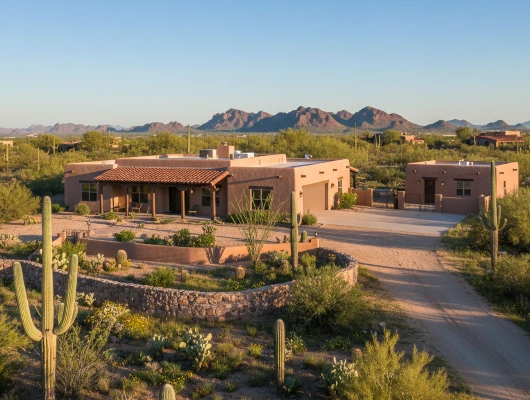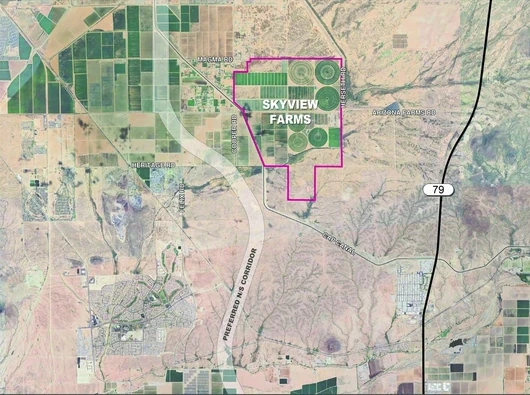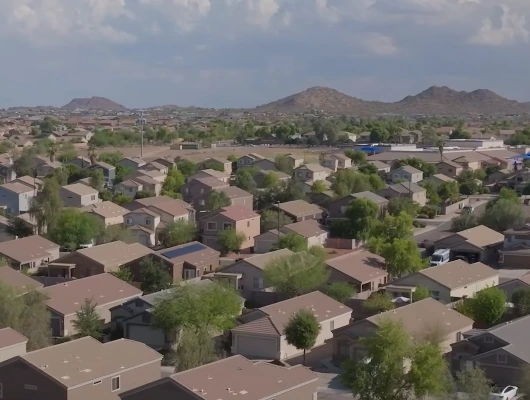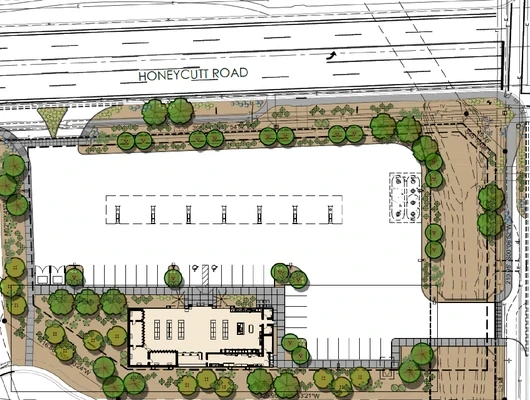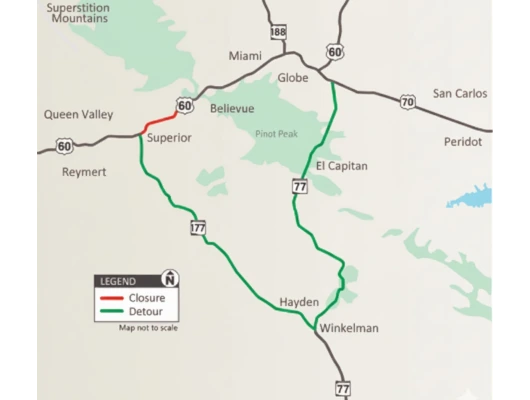DISCLAIMER: Before starting any construction or changes, property owners should check current regulations and get any needed approvals from the correct government department.
Pinal County supervisors heard updates on November 12, 2025, about new accessory dwelling unit regulations. The changes respond to state law requiring all Arizona counties to update their codes by January 1, 2026.
The Board of Supervisors held a work session to discuss text amendments to the county development code. Officials presented proposed changes that would rename “guest house/casita” regulations to “accessory dwelling units.” The updates align county rules with A.R.S. § 11-810.01.
State Law Drives Local Changes
Governor Katie Hobbs signed House Bill 2928 into law on May 23, 2025. The legislation forces counties across Arizona to adopt new rules for accessory dwelling units.
The state law carries serious consequences for counties that miss the deadline. State statute provides that if a county fails to adopt the required development regulations by January 1, 2026, “accessory dwelling units shall be allowed on all lots or parcels zoned for residential use in the county without limits.”
What Is an Accessory Dwelling Unit?
State statute defines an accessory dwelling unit as “a self-contained living unit that is on the same lot or parcel as a single-family dwelling of greater square footage than the accessory dwelling unit.” The unit must include its own sleeping and sanitation facilities. It may include its own kitchen facilities.
The proposed regulations treat ADUs as a “permitted use.” This means property owners can get approval without requiring a public hearing, variance, conditional use permit, special permit, or special exception. A discretionary zoning action may still be needed to determine that a site plan conforms with zoning regulations.
How Many ADUs Can Property Owners Build?
The proposed regulations allow different numbers of accessory dwelling units based on lot size:
For lots less than one acre:
- One single-family dwelling (must exist for ADUs to qualify)
- One attached ADU
- One detached ADU
For lots one acre or larger:
- One single-family dwelling (must exist for ADUs to qualify)
- One attached ADU
- Two detached ADUs (one additional unit)
During the work session, Supervisor Mike Goodman sought to clarify the rules. “So they can have an attached and a detached on a lot that’s less than an acre?” he asked. Denton confirmed this was correct.
Goodman then asked about larger properties. “So they can have two detached?” Denton responded, “Two detached, yep. If they can fit it, I guess, on their lot, they can have two.”
Setback Requirements Reduced Under New Rules
The proposed code significantly changes setback requirements. Under current guest house regulations, structures must meet the front and side setbacks of the main building, with a minimum ten-foot rear setback. The new ADU regulations reduce this dramatically—ADUs need only five feet from rear and side property lines.
After discussing how multiple ADUs can be placed on properties, Chairman Stephen Miller asked whether the five-foot setback still applies. Denton confirmed, “Yes.”
The five-foot minimum applies to rear and side property lines for ADUs. This represents a major change from existing rules. Denton explained that state law requires counties to allow the five-foot setback for ADUs, even in zones with more restrictive requirements for other structures.
“So if the zone is, like, a little bit more restrictive, like GR, I don’t know what the setbacks are, but let’s just say if it was, like, 20 feet, they can go down to five feet for the ADU,” Denton said.
Goodman asked for confirmation. “So if we’ve got the 20 foot you’re saying, we gotta reduce it down to five feet?” Denton replied, “If they choose to do so, yep.”
The ability to use the five-foot setback comes from state statute preemption, not county discretion.
The statute caps rear and side setbacks at five feet from property lines. Front setbacks for ADUs cannot be more restrictive than those required for single-family dwellings in the same zoning area.
Size Limitations for Accessory Dwelling Units
The proposed regulations include specific size limits that vary by property size:
For lots less than one acre:
- Maximum size is 75% of the single-family dwelling’s gross floor area OR 1,000 square feet (whichever is less)
For lots one acre or larger:
- Maximum size is 75% of the single-family dwelling’s gross floor area OR 1,500 square feet (whichever is less)
All ADUs must be at least 200 square feet. “Gross floor area” means the interior habitable area of a dwelling.
An Administrative Interpretation issued May 11, 2025, clarifies that garage areas do not count toward gross livable area calculations. This applies to both the main dwelling and the ADU.
Additional Requirements for Property Owners
The proposed regulations include several other requirements for accessory dwelling units:
Detached ADUs must be at least seven feet from the main building. This requirement comes from building code specifications.
All ADUs must use the same street access as the single-family dwelling. They cannot be served by separate utility meters from the main dwelling.
Each ADU must have a separate exterior entrance from the single-family dwelling. ADUs and single-family dwellings cannot have separate physical addresses. However, ADUs must have separate unit house numbers. Denton explained this requirement helps emergency responders locate the correct unit when responding to calls.
Manufactured homes, mobile homes, and recreational vehicles cannot be used as ADUs. Park model trailers also cannot be used as ADUs, except that A.R.S. § 11-820.03 requires counties to allow park model trailers as ADUs on properties zoned for one dwelling unit per three acres or greater.
Utility Easements and Safety Regulations
Property owners cannot build ADUs on top of current or planned public utility easements. The only exception is if the property owner receives written consent from any utility currently using or potentially using the easement in the future.
The regulations do not supersede existing safety codes. Applicable building codes, fire codes, sensitive environmental area regulations, wildfire prevention regulations, emergency vehicle access regulations, drainage and flood control regulations, and public health and safety regulations still apply.
Septic System Requirements
If a new ADU will not connect to a sewer system, the county will require proper septic capacity. The county may also require adequate septic sizing if the sewer system lacks capacity to serve the new ADU. This requirement must be met before construction begins.
Where ADU Regulations Do Not Apply
The proposed code includes specific exemptions for certain properties. ADU regulations will not apply to:
- Lots or parcels on tribal land
- Land in the vicinity of a military airport or ancillary military facility or property in a high noise or accident potential zone
- Land in the vicinity of a Federal Aviation Administration commercially licensed airport, general aviation airport, or public airport with noise levels greater than 65 decibels
These exemptions come directly from state statute.
Public Participation and Timeline
The county held a public open house on November 3, 2025, at the Emergency Operations Center. No members of the public attended that session.
The Planning and Zoning Commission will hold a public hearing on November 20, 2025. The Board of Supervisors is scheduled to hold a final hearing on December 10, 2025.
Leo Lew encouraged board members to identify stakeholders in their districts who should receive outreach. “If there’s any of them that you want us to make sure to sit down and meet with, if you could let us know,” Lew said.
Chairman Miller committed to putting out public notice about the comment period.
Origins as Housing Solution
The issue of accessory dwelling units emerged as one approach to address affordable housing concerns. Chairman Miller noted the origins of the push. “The genesis of all of this started two or three years ago, and it’s one of the prongs of how to approach affordable housing,” he said.
Miller explained the practical applications. “It really is about providing a mother-in-law’s facility or college kid or whatever. That’s what it’s about.”
He acknowledged limitations of the approach. “I mean, it’s not gonna solve the problem of affordable housing, but it is gonna be a solution for certain folks that can afford to do it. And they will take advantage of it.”
The Board of Supervisors will review recommendations from the Planning and Zoning Commission before making a final decision. The updates must be in place by January 1, 2026, to avoid losing local control over ADU development.
